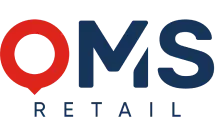How digital shelf labels improve the shopping experience
The article shows how electronic shelf labels (ESL) specifically improve the shopping experience in various sectors. It also looks at economic and technological aspects as well as ecological effects and future prospects.

Topic overview
- What are digital price tags?
- How do electronic shelf labels work?
- How do ESLs change the shopping experience?
- What are the advantages of ESL in food retail?
- Why are ESL worthwhile for electronics stores?
- How do DIY stores and garden centers benefit from ESL?
- What added value do ESLs offer drugstores and pharmacies?
- How do ESLs help fashion stores with omnichannel?
- How are ESLs used in logistics and industry?
- How are ESLs used in the healthcare sector?
- What advantages do ESLs offer for the economy and the environment?
- How can ESL be integrated into IT systems?
- What are the challenges of ESL?
- Where are electronic shelf labels heading?
- Conclusion: Successful use of ESL with OMS Retail
1. what are digital shelf labels?
Electronic shelf labels (ESLs) are digital displays that are attached to shelves, product carriers or products and show current price and product information. They usually consist of e-paper or LCD displays and communicate wirelessly with a central control system.
The content of the labels can be changed centrally so that price updates, product descriptions or stock levels can be adjusted in real time. They therefore replace conventional paper labels and create a flexible, modern and error-free form of product presentation.


2 How do digital shelf labels work?
The technical basis of electronic shelf labels is a display module that works with E-Ink technology or LCD, depending on the system. E-ink has the advantage of low energy consumption, as electricity is only used when the display is updated. LCDs, on the other hand, can display colors and animations.
Communication takes place via radio protocols such as 2.4 GHz systems, Bluetooth Low Energy or Wi-Fi. The ESLs are connected to central software that is operated either locally or cloud-based. Changes to prices or product data are made at the click of a mouse in the backend and transferred to the displays in real time. The ESL has a service life of several years.
3. how do ESLs change the shopping experience?
How exactly can digital shelf labels improve the in-store shopping experience? This question is crucial for companies investing in modern retail concepts. Customers are at the heart of every retail strategy, and the shopping experience determines customer satisfaction, repeat visits and sales.

4 What advantages do ESLs offer in food retailing?
There is particularly high price pressure in the food retail sector. Customers expect daily changing special offers, seasonal promotions and price reductions for items with an approaching best-before date. Digital shelf labels offer considerable advantages here and improve the in-store shopping experience in the long term:
Fast price update:
Prices can be changed within seconds. Whether special promotions, dynamic daily prices or adjustments to perishable goods - electronic shelf labels ensure that prices on the shelf are always up to date. This avoids frustration for customers who take price discrepancies to the checkout.
Better goods control:
Food with a short shelf life can be reduced in good time. Automated price adjustments help to reduce markdowns and increase sales at the same time. Customers benefit from low prices and retailers from reduced losses.
Optimization of customer information:
Electronic shelf labels can display additional information, such as origin, organic seal or information on allergens. This transparency increases trust and has a positive influence on purchasing decisions.
Sustainability:
Dispensing with paper labels not only reduces the consumption of resources, but also protects the environment - especially when prices change frequently. This contributes to the sustainability goals of many retail chains and has a positive effect on their image.
Consistency between online and offline prices:
Synchronized price information is particularly important for advertising campaigns that are advertised both online and in brochures. Customers rely on the advertised prices and appreciate the reliability in the market.
Thousands of electronic shelf labels are already in use at numerous leading retail chains in Germany. They enable a rapid response to market changes, increase transparency and make a noticeable contribution to customer satisfaction. Overall, electronic shelf labels make the shopping experience in the supermarket more efficient, reliable and sustainable.

5 Why are ESLs worthwhile for electronics stores?
Product cycles are particularly short in consumer electronics stores such as MediaMarkt Saturn or Expert. Prices change quickly due to competitive pressure, market developments or stock reductions. Electronic shelf labels offer decisive advantages here in order to be able to react flexibly to these dynamics and improve the shopping experience in the store.
Real-time price updates:
If a product is reduced online or a competitor makes a better offer, the price in the store can be adjusted immediately. Electronic shelf labels prevent price discrepancies between online and brick-and-mortar stores.
Transparency for complex products:
Electronic shelf labels can display technical data, product comparisons or energy efficiency classes. This is particularly helpful for complex products such as televisions or laptops and supports customers in their decision-making process.
Interactive elements:
Modern ESLs can display QR codes that lead to video instructions, product reviews or online customer opinions. This meets the need for information directly at the shelf - a decisive advantage over purely online offers.
Visual sales promotion:
Special offers can be visually highlighted using color displays or flashing elements. This increases attention and encourages impulse purchases.
Consistent pricing policy:
In the technology sector in particular, customers look for price consistency between online stores and stores. Electronic shelf labels ensure consistency, which strengthens trust.
Through the targeted use of electronic shelf labels, electronics stores are creating a modern, networked shopping experience that combines online convenience with stationary advice. Customers benefit from real-time information, a clear price structure and technical orientation directly at the shelf.

6 How do DIY stores and garden centers benefit from ESL?
DIY stores and garden centers are characterized by a very broad and often seasonal product range. The challenge: products change frequently, prices have to be adjusted and additional information has to be clearly communicated. Electronic shelf labels offer ideal solutions for this and take the shopping experience to a new level.
Flexibility with seasonal articles:
Whether garden soil in spring or road salt in winter - electronic shelf labels allow prices to be quickly adjusted to demand, stock levels and the supply chain. This ensures agility in price management.
Providing information on products requiring intensive advice:
Care instructions for plants, safety information for tools or installation information for building materials can be displayed directly on the digital label or made accessible via QR code. This gives customers more guidance and enables them to make informed decisions.
Efficient product range maintenance:
New products can be entered into the system immediately and provided with correct price and product information. This speeds up the introduction of new items and reduces incorrect awards.
Reduction of manual effort:
Staff do not have to exchange paper labels and can concentrate on providing advice instead. This increases the quality of service and takes the pressure off the team.
Customer satisfaction through clarity:
In confusing product groups such as screws, plugs or small parts, digital labeling helps to find the right products more quickly.
Electronic shelf labels are increasingly being used in well-known German DIY chains. In the garden and plant department in particular, they significantly improve the shopping experience by making care information, stock status or discount promotions directly visible.
Electronic shelf labels are therefore also helping to make the in-store shopping experience more efficient, informative and customer-friendly in this sector.

7 What added value do ESLs offer in drugstores and pharmacies?
Drugstores and pharmacies offer a particularly wide range of health, cosmetic and care products. At the same time, there is a high demand for information among customers. Electronic shelf labels create clear added value here, both in terms of efficiency and the in-store shopping experience.
Transparent product information:
Electronic shelf labels make it possible to display ingredients, areas of application, warnings or age recommendations. This is particularly relevant for sensitive products such as baby products, food supplements or over-the-counter medicines.
Reliable price information:
In pharmacies, many prices are subject to legal requirements or change frequently. ESLs ensure that all prices on the shelf are updated daily and displayed correctly. This reduces discussions at the checkout and ensures a trustworthy shopping experience.
Interactive consulting supplement:
Customers can use QR codes to access further information, product comparisons or application videos. Electronic price labeling thus becomes the gateway to digital advice.
Support for staff:
ESLs relieve pharmacy staff of the task of manually changing price labels, allowing them more time for individual customer advice.
Implement special promotions efficiently:
Discount promotions, interactions with combination products or targeted campaigns can be clearly communicated via ESL.
Whether in traditional pharmacies or in drugstore chains such as Rossmann or dm - electronic shelf labels improve the shopping experience in stores by providing better information, security and transparency.

8. how do ESLs help fashion houses with omnichannel?
Flexibility, brand staging and cross-channel strategies play a key role in fashion stores. Electronic shelf labels offer the fashion industry decisive advantages that significantly enhance the in-store shopping experience.
Dynamic pricing:
Seasonal promotions, sales or daily discounts can be implemented quickly and centrally via ESL. Prices can be flexibly adjusted without manual intervention, especially during periods of high promotional pressure.
Make product information visible:
Information on materials, care instructions and origin can be displayed directly on the price tag. Customers make informed decisions based on transparent information.
Omnichannel networking:
QR codes on the labels link to the product page in the online store. Customers can use their smartphone to check size availability, view alternative colors or order items directly to their home.
Consistency in brand perception:
Consistent price and promotion communication in all channels ensures trust and a professional brand image. Customers do not experience any contradictions between the online offer and the store.
Support for visual merchandising:
ESLs can be integrated into the store design. Some systems allow logos or CI elements to be displayed, which strengthens the brand presence on the shelf.
An illustrative example is the use of digital shelf labels by fashion chain stores with a strong omnichannel strategy. Customers can reorder sizes directly in the store using an app, call up information or save items on a wish list. This links stationary shopping with digital services and sustainably improves the shopping experience.

9. how are ESLs used in logistics and industry?
Electronic shelf labels are also used outside the traditional retail sector - particularly in logistics, production and warehousing. Here, ESLs are not only used for price labelling, but also for efficient information transfer and process optimization.
Real-time stock display:
ESLs display stock levels, article numbers or minimum quantities. If an item is removed or replenished, the label is updated automatically. This makes stock control easier and reduces shortages.
Optimization of order picking:
ESLs can use visual signals such as flashing lights to indicate which item is to be picked. This "pick-by-light" function reduces travel times and increases the speed of the dispatch process.
Maintenance and process information:
ESLs mounted on machines or workstations can display maintenance instructions, order status or safety instructions. This improves communication on the store floor.
Seamless integration into ERP systems:
The connection to merchandise management and production systems ensures automated control of material flows and increases transparency in the supply chain.
Increased occupational safety:
Clear, digital labeling prevents errors when removing materials or components.
Logistics centers, production lines and industrial companies are increasingly relying on electronic shelf labels to make internal processes more efficient and secure. The result: higher productivity, lower error rates and a transparent material flow.

10 How are ESLs used in the healthcare sector?
In the healthcare sector, patient safety and the efficiency of internal processes are paramount. Hospitals, care facilities and medical care centers are increasingly using electronic shelf labels to optimize the storage, labelling and management of medicines, consumables and devices.
Safe medication labeling:
ESLs can display dosage information, application areas or warnings. This reduces the risk of confusion and contributes significantly to patient safety.
Inventory monitoring:
Consumables such as syringes, gloves or dressing materials can be managed with electronic labels. Stock levels are displayed automatically and a message is sent to the merchandise management system if minimum quantities are not reached.
Maintenance information for medical technology:
Electronic shelf labels on medical devices can display upcoming maintenance dates, availability status or calibration information.
Fast response to callbacks:
In the event of product recalls, relevant information can be displayed immediately on the affected ESLs, e.g. batch numbers or instructions on how to remove products from circulation.
Facilitation of the inventory:
ESLs enable automated and error-free recording of stock levels through centralized data control.
In hospitals, the use of electronic shelf labels improves the shopping experience in a broader sense: not only do patients benefit from greater security, but staff are also relieved and processes are made more transparent.
11 What advantages do ESLs offer for the economy and the environment?
The use of digital shelf labels not only brings operational benefits, but also has a positive impact on profitability and sustainability. Companies benefit from long-term savings, while ecological goals are supported.
Reduction in operating costs:
The savings in printing costs, paper labels, toner and manual labor for price changes can lead to significant cost reductions.
Fewer errors, fewer losses:
The central control of price labeling significantly reduces the error rate. Mispricing, double labeling or forgotten promotions are a thing of the past.
Return on investment (ROI):
Although ESLs are initially cost-intensive, the investments pay for themselves in the medium term through the efficiency gains and sales increases achieved.
Contribution to sustainability:
The elimination of paper labels reduces waste and CO₂ emissions. Battery-powered ESLs with a long service life or solar-powered versions further enhance this effect.
Less food waste:
In the retail sector, products with an expiring best-before date can be discounted in good time to reduce markdowns. This reduces food waste and increases margins.
Overall, it shows that electronic shelf labels not only improve the in-store shopping experience, but also offer strategic added value for efficiency, the environment and profitability.

12 How are ESLs integrated into IT systems?
A key success factor for the use of electronic shelf labels is seamless integration into existing IT and merchandise management systems. This is the only way to automate processes and fully exploit the benefits of the technology.
Central control:
Price and product information is maintained in the ERP or merchandise management system and automatically forwarded to the ESL systems. This saves time and prevents inconsistencies between different systems.
Automatic price and stock updates:
Every price change is passed on to the shelf in real time. Stock levels or availability can also be displayed, e.g. with the note "only 3 items left in stock".
Omnichannel integration:
It is important for retailers that prices in online stores and stores match. ESLs help to ensure this consistency by connecting them to e-commerce platforms.
Interfaces and APIs:
Modern ESL systems offer open interfaces for connecting to third-party systems such as CRM, POS, digital signage or mobile apps. This creates a holistic ecosystem.
Scalability:
The systems can be flexibly expanded so that new stores, product ranges or pricing strategies can be quickly integrated.
The technical connection is the basis for smooth operation. Only when ESLs are embedded in the digital infrastructure can they make their full contribution to improving the in-store shopping experience.

13. what are the challenges of ESL?
Despite the many advantages, there are also challenges when using electronic shelf labels that companies should realistically assess and plan for at an early stage.
High initial investment:
The introduction of an ESL system involves investments in hardware, software, infrastructure and training. Depending on the size of the business, the barrier to entry can be significant.
Technical complexity:
Connecting to existing systems requires in-depth IT know-how. Configuration errors can lead to failures or incorrect displays.
Maintenance effort:
Even if the battery life is usually several years, thousands of labels need to be maintained or replaced in the long term. A corresponding maintenance plan is necessary.
Network stability:
ESL systems are dependent on stable radio connections. Large surfaces, shelf height or metal shelves can impair the signal strength.
Acceptance by employees:
Switching to digital systems requires training and a willingness to change. Clear communication of the benefits is important in order to get the workforce on board.
Limits for complex content:
Small-format ESLs are limited in their ability to display extensive information. Additional information must therefore be provided via QR codes or supplementary displays.
Despite these challenges, the advantages clearly outweigh the disadvantages with careful planning and professional implementation. Companies that rely on electronic shelf labels report measurable increases in efficiency and a noticeably improved in-store shopping experience.

14 Where are electronic shelf labels heading?
Electronic shelf label technology is constantly evolving. New applications and technical innovations will shape the in-store shopping experience even more in the future.
Dynamic pricing in real time:
With the increasing networking of market data, demand analyses and competition monitoring, ESLs will also be used for automated price optimization in the future. Prices could be adjusted depending on the time of day or the weather.
Extended interactivity:
ESLs with touchscreen function or NFC enable direct interaction with the customer. In future, product reviews, recipe suggestions or personalized coupons could be called up directly at the shelf.
Sustainable technologies:
Developments in the direction of solar-powered ESLs or energy harvesting systems promise an even better eco-balance and longer life cycles without battery replacement.
Larger display variants:
For special applications (e.g. in the non-food sector or promotional areas), larger ESLs are increasingly being used, which can replace entire shelf signs or posters.
Integration into smart store concepts:
In future, electronic shelf labels will be linked even more closely with other technologies such as electronic shopping lists, digital customer cards and in-store navigation.
These developments show: Electronic shelf labeling is not just a technical tool, but a key to the strategic development of brick-and-mortar retail. It ensures that the in-store shopping experience remains relevant, efficient and inspiring in the future.
15 Conclusion: Successful use of ESL with OMS Retail
Electronic shelf labels (ESLs) are more than just digital price tags. They are one of the central elements of digital transformation in retail, industry and healthcare. Thanks to their ability to provide information in real time, automate processes and improve the shopping experience, they have established themselves as a future-proof technology. Customers benefit from transparency and trust, while companies gain efficiency, flexibility and competitiveness. ESLs connect the online and offline worlds and enable a consistent, modern shopping experience across all channels.
Whether in supermarkets, DIY stores, pharmacies or fashion stores: electronic shelf labels increase service quality, reduce sources of error and make stationary retail more agile. They create a shopping experience that impresses customers and optimizes operational processes at the same time. Investing in ESL today lays the foundation for the retail of tomorrow - digital, sustainable and customer-oriented.
OMS Retail supports companies as a manufacturer-independent full-service partner in all project phases - from planning and installation to ongoing maintenance. With over 20 years of experience in the industry and a team working across Europe, we offer solutions that make processes efficient and meet the demands of a digital clientele.
Your way to digital price labeling!
For further information, please contact Mr. Christoph Lange for a non-binding consultation.

Christoph Lange
Mail: info@oms-retail.com
Call: +49 (0)511 / 515 283-0
